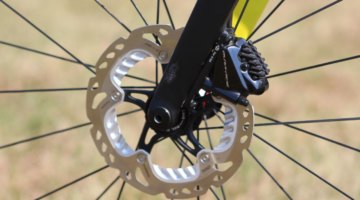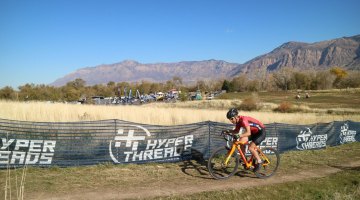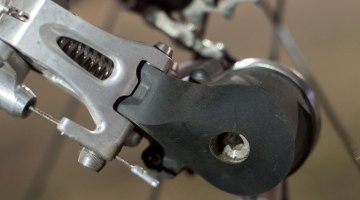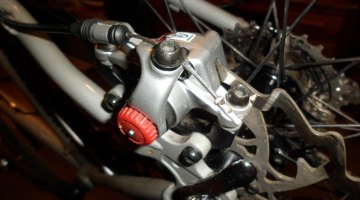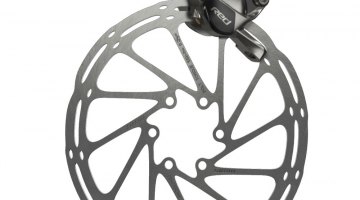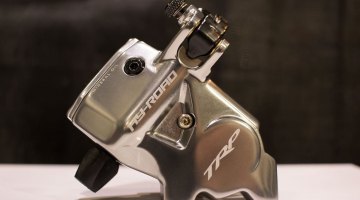On a sunny afternoon in Los Gatos, Calif., TRP Brakes took a handful of cycling journalists out into the hills above Silicon Valley for some serious descending, and unfortunately for those of in “off-season” form, some climbing as well. Major descents included Redwood Gulch above Saratoga which averages 9%, and Mount Eden and Monte Bello in Cupertino.
It’s first worth noting that when you have top cyclocrossers Ben Berden and Nicole Duke on your ride, it’s tempting to want to seize the opportunity to try to stay with them on the downhills, however stupid chasing renown bike handlers and former downhillers may seem. Thankfully, this author quickly realized the point of the ride was to test brakes, not the ability to resist using them.
We tested the TRP HY-RD with Shimano’s Dura-Ace 10-speed Di2 STI levers, with a 160mm rotor in the front and 140mm rotor in the rear. In use, the brake modulation is impressive, with adequate braking power from the hoods for almost any descent, with rubber-burning skids easily possible from the drops with moderate effort. On a fast descent, it’s not quite one finger braking, but still very powerful. With a full grab, the braking power ramps up quite quickly, which may take getting used to for some.
With the longer cable pull of Shimano’s newer levers, the brake lever travel felt just about right for me, coming halfway to the bars during maximum braking, but I tend to prefer to run my brakes “looser.” It’s worth noting that with Campagnolo levers, older Shimano levers and pre-2014 SRAM DoubleTap levers (the SRAM cable pull has been rumored to have increased to be similar to Shimano’s), the smaller cable pull of those levers will bring the levers closer to the bars under hard braking. For those with smaller hands, this may be preferable, though for others, it could actually be scary. TRP Brakes offers a barrel adjuster down at the brake, and that is useful to remove initial slack in the cable, but don’t confuse this thumbscrew with a reach adjustment, as the pistons on the brake need to fully retract and over-tightening the thumbscrew can prevent this. Thankfully, TRP designed another thumbscrew to aid in setup and help avoid excessive initial cable tension.
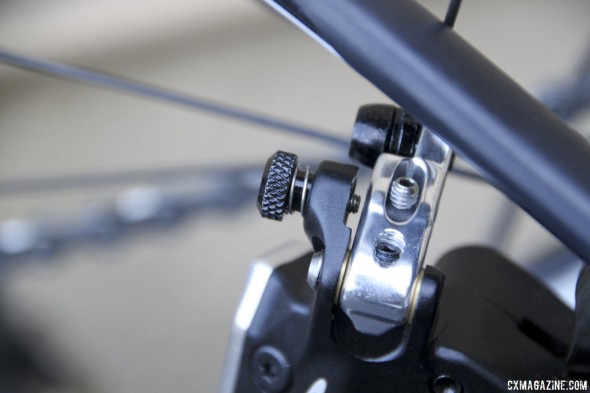
The thumbscrew lock is there to aid in setup, but can also help racers avoid displacing the pistons when the wheel isn’t in place. © Cyclocross Magazine
After getting used to the bike and braking after a few turns, I found myself descending with confidence and braking a lot later before turns. I never unintentionally skidded (I was on a road tire, which has more grip than a cyclocross tire on dirt or grass), and actually enjoyed descending even more knowing that I could really open it up on the straights and slow down in time for the corners. An increase in fun—that’s always a good thing, right?
The HY-RD definitely outperforms any mechanical disc brake I’ve ridden, surpasses TRP’s own Parabox brake system, and comes close to the Formula R1-based 324 Labs system we’ve spent a good amount of time on. It also looks a lot more elegant than any handlebar or steerer tube-mounted system, at a weight competitive to the popular standard, the Avid BB7 mechanical disc brake.
For most potential customers, the attraction will be the increase in braking power and improvement in modulation over rim brakes and mechanical disc brakes. For others, it will be the benefit of self-centering, self-adjusting pads, especially in a muddy or sandy cyclocross race that eats through brake pads and would have mechanical disc brake riders pulling their brake levers to their bars.
Photos and full specs on the next page.























